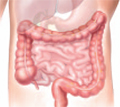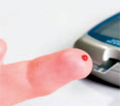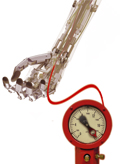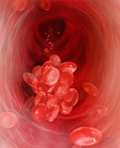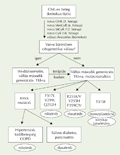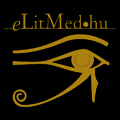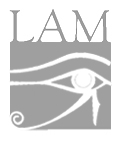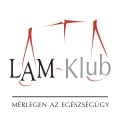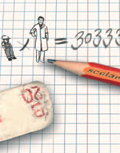The eLitMed.hu medical portal uses computer cookies for convenient operation. Detailed information can be found in the Cookie-policy.
Lege Artis Medicinae - 2009;19(12)
Content
[Systemic adjuvant pharmacotherapy of colorectal cancer]
[Colorectal cancer is one of the most frequent cancer in the postindustrial world; its most common form is adenocarcinoma. In Hungary, colorectal cancer has the second highest mortality among tumours. If diagnosed early, it might be successfully treated by surgery, however, chemotherapy is necessary to prevent tumor relapse and development of metastases and achieve adequate palliation. In the past few years, adjuvant treatment of colorectal cancer has improved substantially. Many new drugs have been developed, which are also being used in combination with previously known agents. This article will discuss the novelties in the field of adjuvant chemotherapy for colorectal cancer and the main guidelines of adjuvant treatment.]
[Insulin analogues and pregnancy]
[Near-normoglycaemic metabolic control in pregnant women with diabetes - started before conception in pregestational diabetes - decreases the frequency of maternal and foetal complications. Such control can be achieved by using optimalised systems of insulin therapy. A number of (ultra)rapid and long-acting insulin analogues became available during the last decade, which - on the basis of theoretical considerations - might be used to maintain normoglycaemia. Summarising the data available today, the use of rapid insulin analogues (lispro, aspart) seem to be effective and safe during pregnancy. Some questions arise, however, about their modes of application. The use of long-acting insulin analogues in pregnancy is currently not indicated. Further trials are needed to prove their efficacy and safety in diabetic pregnancy.]
[Resistant hypertension - differential diagnosis and therapy]
[Hypertension is considered resistant to therapy if the target blood pressure is not achieved despite treatment with three different types of antihypertensive drugs, including a diuretic. Causes of therapy resistance may be grouped into three broad categories: Pseudoresistance can be the result of inadequate blood pressure measurement technique, the “white-coat” effect or the patients’ noncompliance with pharmacological and nonpharmacological medical advices. Evaluation of the measurement technique - including the size of the cuff used - and blood pressure monitoring at home can help identify the causes of pseudoresistance. Secondary resistance comprises drug interactions and concomitant medical conditions that elevate blood pressure or antagonize antihypertensive therapy. In addition, secondary resistance can result from disorders associated with secondary hypertension, among which appropriate screening for hyperaldosteronism as well as for renoparenchymal and renovascular hypertension need special emphasis. Suboptimal therapy is frequently related to subclinical volume overload and the use of inappropriate type or dosing of diuretics. Furthermore, when choosing the optimal drug combination, care should be taken to inhibit the various systems that regulate blood pressure as much as possible. In addition to combining the most frequently used antihypertensive drugs, the use of aldosterone antagonists, vasodilators, nitrates or drugs affecting the central nervous system might help to optimise treatment.]
[The relevancy of measuring the level of D-dimer test in clinical practice]
[Plasma levels of D-dimer may rise in a number of pathological conditions, which might be relevant for diagnosis as well as for prognosis. Its concentration increases with age, perhaps because of the wide-spread co-morbidity. In this article we demonstrate the diagnostic role of Ddimer in the well-known thromboembolic diseases. Beyond that, we highlight the importance of measuring D-dimer levels in other, lesser-known conditions, about which important findings have been published, such as cardiovascular, inflammatory or malignant diseases. It seems that in these disorders - provided that appropriate clinical conditions are available -, measuring D-dimer levels might have a role not only in diagnosis but in the prognosis as well. Furthermore, our aim was to discourage inappropriate clinical practice. Ignoring to measure the D-dimer levels (for fear of it being high) might lead to diagnostic errors. On the other hand, routinely performing the D-dimer test without clinical consideration (in the hope of it being negative) might cause diagnostic confusion in case of unexpected positivity and - mostly because of false interpretation - lead to further, unnecessary examinations.]
[Rituximab therapy in rheumatoid arthritis]
[Rheumatoid arthritis is a chronic, lifelong disease that causes severe joint deformity, reduces quality of life, and, if not treated appopriately, leads to disability and substantial premature mortality. Its treatment is a multistep procedure, where different grades of treatment options follow each other. Besides traditional, diseasemodifying antirheumatic drugs (DMARDs) and biological therapies inhibiting TNF, a new therapautic option is the use of a chimeric antibody, rituximab, which inhibits B lymphocyte function. This drug is an effective and safe choice for those patients who have received various anti- TNF therapies or do not tolerate TNF inhibition.]
[Direct health care costs of diabetes mellitus in Hungary]
[INTRODUCTION - Diabetes mellitus is responsible for a huge burden of disease all over the world, including Hungary, as well. The object of our study was to estimate the direct health care costs of treating patients with diabetes, in order to characterize this aspect of the burden of disease, and to facilitate the use of this information in further analyses. METHODS - We used the data of the National Health Fund. Diabetic patients were defined as persons who filled in a prescription of oral antidiabetics (OAD) or insulin in the second half of 2007. We divided this study population into two groups depending on whether they were or were not hospitalised for major complications of diabetes in 2007-2008. The group that was not hospitalised was further divided into three subgroups according to the use of drugs (only OAD, only insulin, OAD and insulin). In all study groups, we estimated the mean, the standard deviation, and the median of health care costs for each cost item by age group in the whole study group and among those who actually used a particular service. Additionally, we took samples of patients who were hospitalised for specific complications, and estimated the health care costs for the first and for the second year after the occurrence of the complication. RESULTS - The mean health care cost of the 521,545 diabetic patients involved in the analysis was 335 thousand HUF. It was 633 thousand HUF for those who were hospitalised for complications, 242 thousand for OAD users without complications, and 449 thousand for insulin users without complications. 53% of the total cost covered drug treatment and 27% acute hospital treatment. 26% of the total drug cost was spent on OADs and on insulin. The acute hospital cost and the drug cost had multiplied within the first year of complication. The latter remained high or further increased in the second year. CONCLUSION - The healthcare cost of diabetes is already very high in Hungary, especially the care for its complications. Considering the burden of disease that manifests in premature mortality, reduction in quality of life, and high cost, and the epidemiological trends, diabetes mellitus should be a public health priority in Hungary.]
1.
Clinical Neuroscience
Is there any difference in mortality rates of atrial fibrillation detected before or after ischemic stroke?2.
Clinical Neuroscience
Factors influencing the level of stigma in Parkinson’s disease in western Turkey3.
Clinical Neuroscience
Neuropathic pain and mood disorders in earthquake survivors with peripheral nerve injuries4.
Journal of Nursing Theory and Practice
[Correlations of Sarcopenia, Frailty, Falls and Social Isolation – A Literature Review in the Light of Swedish Statistics]5.
Clinical Neuroscience
[Comparison of pain intensity measurements among patients with low-back pain]1.
Clinical Neuroscience Proceedings
[A Magyar Stroke Társaság XVIII. Kongresszusa és a Magyar Neuroszonológiai Társaság XV. Konferenciája. Absztraktfüzet]2.
3.
Journal of Nursing Theory and Practice
[A selection of the entries submitted to the literary contest "Honorable mission: the joys and challenges of our profession" ]4.
Journal of Nursing Theory and Practice
[End of Life and Palliative Care of Newborns in the Nursing Context]5.
Journal of Nursing Theory and Practice
[Aspects of Occupational Health Nursing for Incurable Patients ]



